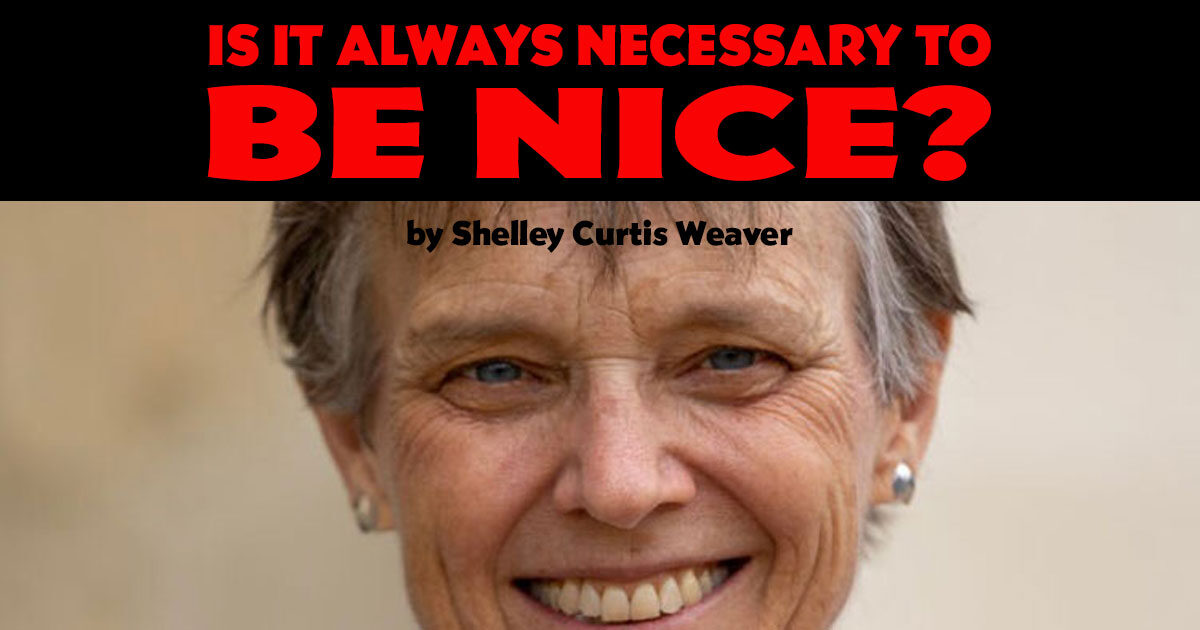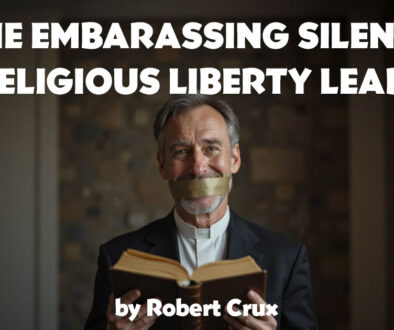Is It Always Necessary to Be Nice?
by Shelley Curtis Weaver | 25 March 2025 |
At the prayer service following the 2025 inauguration, Episcopalian bishop Mariann Edgar Budde asked the newly elected United States president to show mercy during his new term of office. With cameras trained both on her and on the president and his squirming family in the pew, Bishop Budde reminded him that many people were afraid of his campaign promises—and that Christians are called to mercy.
Asked for a response after the service, the president answered by claiming Budde had used a “nasty tone,” and was boring as well—two characteristics that rarely go together.
Nice people
It’s always interesting to see who is told to “be nice.” Children know the command. Women too. Adult men? Rarely.
Why is this, and what does it really mean to be “nasty” or “nice”?
For Christians, the question is complicated by Matthew 5 and Luke 6, where we find the beatitudes and other challenging teachings. Is the command to turn the other cheek and go the second mile a definition of “niceness”? Does civility mean avoiding mention of any point that might be painful or confrontational? Does niceness demand we shut up and put up with behavior that hurts people?
Wanting to be fair to both parties, I listened to Reverend Budde’s sermon, as well as to the accusation and to the interviews Budde gave to explain her words. In tone, Bishop Budde speaks calmly and concisely. Her style is simple and direct. Her volume is modulated, yet clear. It could never be called a “fiery” sermon by rhetorical standards.
In fact, nothing in the tone of that sermon could fairly be described as nasty.
Tone vs. content
But of course, tone and volume aren’t the only things that can make our speech “nasty” or not “nice.” A pleasant tone can glide over and around sinister words. When I taught Hamlet to high school students, I made it a point to emphasize Hamlet’s observation, that “One may smile and smile and be a villain.” The “keep sweet” voice can either be a white flag of submission—or a red flag that the speaker means to coerce or control. (Manipulation and coercion, I should point out, are actually violence too—merely a mental and psychological variety rather than physical.)
That leaves us with content. But even here, Budde was kind. She spoke to the providence the president had himself experienced—for example, the protection he claimed was evidence of the special role he was called to fill. Reverend Budde did not shame him for this claim. She called him to the truth of what such a calling might require of us. (I say “us,” because the unspoken reply, the answer whenever we ask if we are our brother’s keeper is “Yes!”) When Budde described the fearful among us, and what mercies they need, she was offering a better path.
We Adventist Christians have discussed some of the same people referenced by Bishop Budde. On the surface, these presentations are always “nice.” The tone and words seem conciliatory and fair. We are urged to treat LGBTQ people, for example, with care and with respect. Leaders tell us that this is their objective, too.
Condemnation & compassion
Yet no matter the tone, no matter the proffered love, this remains: accepting certain individuals in the church is forbidden. Dangerous. Engaging with those who challenge doctrine and policy is said to send us down the wrong path.
There’s very little mention of showing these people the same mercies we’ve been granted.
Since we’ve been taught that a wide path leads to destruction and a narrow one to salvation, it’s easy for Christians to defend condemnation and expulsion as compassion and care. We are reminded that the Lord “chastens,” and that tough love is the greatest mark of a loving God and a responsible church.
But of course, there’s the catch. We commandeer the mantle of rule-making and perimeter-building with such gusto that we literally call it “doing the Lord’s work.” That, to be frank, is blasphemy.
The kingdom here
When Jesus mentions that he is at work and his Father is also working, he means both healing and universe-building. He’s speaking of a present kingdom where God engages our consciences, our conversations and our reasoning. It’s through these avenues that lives are changed. It is in these ways that we grow personally and spiritually.
The scripture becomes a living word whose stories and teachings invite us to take a new path as we unfold its meaning. The effect of such work is powerful. Jesus calls this getting eyes to see and ears to hear.
The God of Isaiah issues an invitation for us to come and reason together. It’s a rich invitation. On this narrow path of choices and change, even a cheating, extorting, womanizer could wrestle with God through the night to become a new man with a new name in the morning.
Such a person can either accept the invitation to change, or protest that he’s been attacked. By reducing Budde’s sermon to taglines—“nasty,” “not very exciting”—her most prominent listener missed this critical opportunity. Rev Budde’s sermon was an invitation. She described the parameters of the problem, the individuals who might be affected, and requested mercy on their behalf. She engaged with the promises and policies he’d made, and implored him to take a course of mercy.
Mercy, like listening, is a muscular thing and requires engagement.
That Sunday, the president chose to react to Budde’s sermon with defensiveness and derision. Ducking that opportunity says more about the listener than the message. Similarly, when our Adventist leadership refuses to accept women as pastors, or LGBTQ people even as members, it is saying something about itself.
Our leaders—our entire church—might be blessed by learning from the example of Bishop Budde’s faithful shepherding. Opening the doors and welcoming anyone and everyone to fellowship is the work of the followers of Jesus. Extending invitations to engage with God and each other is a holy calling. Allowing God to do God’s work of guiding and convicting hearts frees us to be the disciples we all are, regardless of church rank or title.
 Shelley Curtis Weaver lives in coastal Washington state. She is a clay-artist, writer, wife, mother, grandmother, and a frequenter of Columbia River crossings. She has edited and contributed to The Journey to Wholeness addiction recovery curriculum from AdventSource.
Shelley Curtis Weaver lives in coastal Washington state. She is a clay-artist, writer, wife, mother, grandmother, and a frequenter of Columbia River crossings. She has edited and contributed to The Journey to Wholeness addiction recovery curriculum from AdventSource.




